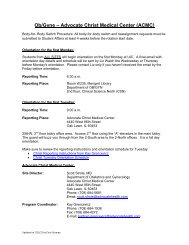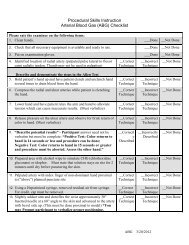a PDF version of the Full Hematology Oncology Curriculum
a PDF version of the Full Hematology Oncology Curriculum
a PDF version of the Full Hematology Oncology Curriculum
You also want an ePaper? Increase the reach of your titles
YUMPU automatically turns print PDFs into web optimized ePapers that Google loves.
Specific Program Content<br />
The Fellows receive formal instruction, clinical experience, and opportunities to acquire knowledge in<br />
<strong>the</strong> following:<br />
1. Morphology, physiology, and biochemistry <strong>of</strong> blood, marrow, lymphatic tissue, and <strong>the</strong> spleen<br />
2. Basic molecular and pathophysiologic mechanisms, diagnosis, and <strong>the</strong>rapy <strong>of</strong> diseases <strong>of</strong> <strong>the</strong><br />
blood, including anemias, diseases <strong>of</strong> white cells, and disorders <strong>of</strong> hemostasis and thrombosis<br />
3. Etiology, epidemiology, natural history, diagnosis, pathology, staging, and management <strong>of</strong><br />
neoplastic disorders<br />
4. Immune markers, immunophenotyping, cytochemical studies, and cytogenetic and DNA analysis<br />
<strong>of</strong> neoplastic disorders<br />
5. Molecular mechanisms <strong>of</strong> neoplasia, including <strong>the</strong> nature <strong>of</strong> oncogenes and <strong>the</strong>ir products<br />
6. Chemo<strong>the</strong>rapeutic drugs, biologic products, and growth factors and <strong>the</strong>ir mechanisms <strong>of</strong> action,<br />
pharmacokinetics, clinical indications, and limitations, including <strong>the</strong>ir effects, toxicity, and<br />
interactions<br />
7. Multiagent chemo<strong>the</strong>rapy protocols and combined modality <strong>the</strong>rapy in <strong>the</strong> treatment <strong>of</strong><br />
neoplastic disorders<br />
8. Principles and application <strong>of</strong> surgery and radiation <strong>the</strong>rapy in <strong>the</strong> treatment <strong>of</strong> neoplastic<br />
disorders<br />
9. Management <strong>of</strong> <strong>the</strong> neutropenic and/or immunocompromised patient<br />
10. Effects <strong>of</strong> systemic disorders, infections, solid tumors, and drugs on <strong>the</strong> blood, blood‐forming<br />
organs, and lymphatic tissues<br />
11. Allogeneic and autologous bone marrow transplantation and <strong>the</strong> nature and management <strong>of</strong><br />
post‐transplant complications<br />
12. Indications and application <strong>of</strong> imaging techniques in patients with blood and neoplastic<br />
disorders<br />
13. Pathophysiology and patterns <strong>of</strong> solid tumor metastases<br />
14. Principles <strong>of</strong> gynecologic oncology<br />
15. Pain management in <strong>the</strong> cancer patient<br />
16. Rehabilitation and psychosocial management <strong>of</strong> patients with hematologic and neoplastic<br />
disorders<br />
17. Hospice and home care for <strong>the</strong> cancer patient<br />
18. Recognition and management <strong>of</strong> paraneoplastic disorders<br />
19. The etiology <strong>of</strong> cancer, including predisposing causal factors leading to neoplasia<br />
20. Cancer prevention and screening<br />
21. Leading an active multidisciplinary tumor board<br />
22. Tests <strong>of</strong> hemostasis and thrombosis for both congenital and acquired disorders and regulation<br />
<strong>of</strong> antithrombotic <strong>the</strong>rapy<br />
23. Treatment <strong>of</strong> patients with disorders <strong>of</strong> hemostasis and <strong>the</strong> biochemistry and pharmacology <strong>of</strong><br />
coagulation factor replacement<br />
24. Transfusion medicine, including <strong>the</strong> evaluation <strong>of</strong> antibodies, blood compatibility, and <strong>the</strong> use <strong>of</strong><br />
blood component <strong>the</strong>rapy and apheresis procedures<br />
25. Personal development, attitudes, and coping skills <strong>of</strong> physicians and o<strong>the</strong>r health‐care<br />
pr<strong>of</strong>essionals who care for critically ill patients<br />
26. Human immunodeficiency virus‐related and o<strong>the</strong>r immunodeficient states associated<br />
malignancies<br />
16



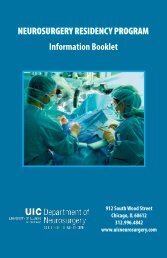
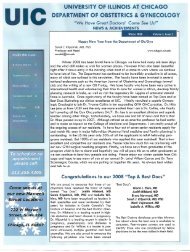
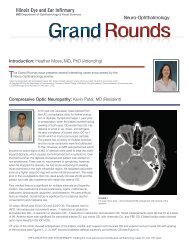
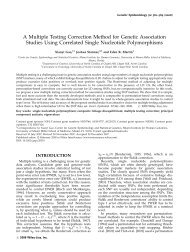
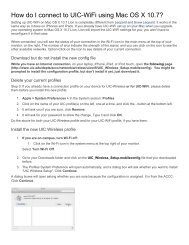
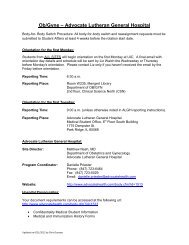

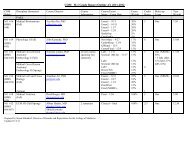

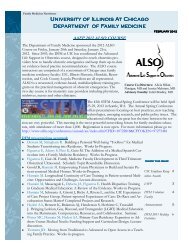
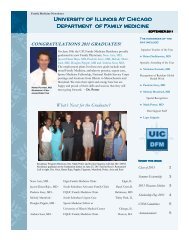
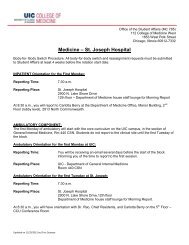
![CV Joan [W51] - University of Illinois College of Medicine at Chicago ...](https://img.yumpu.com/17336863/1/190x245/cv-joan-w51-university-of-illinois-college-of-medicine-at-chicago-.jpg?quality=85)
